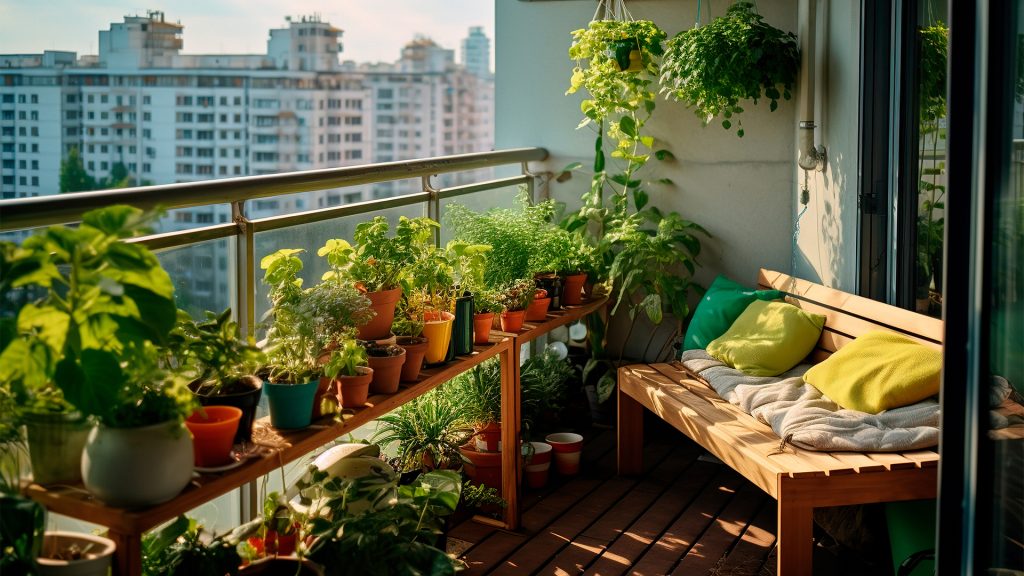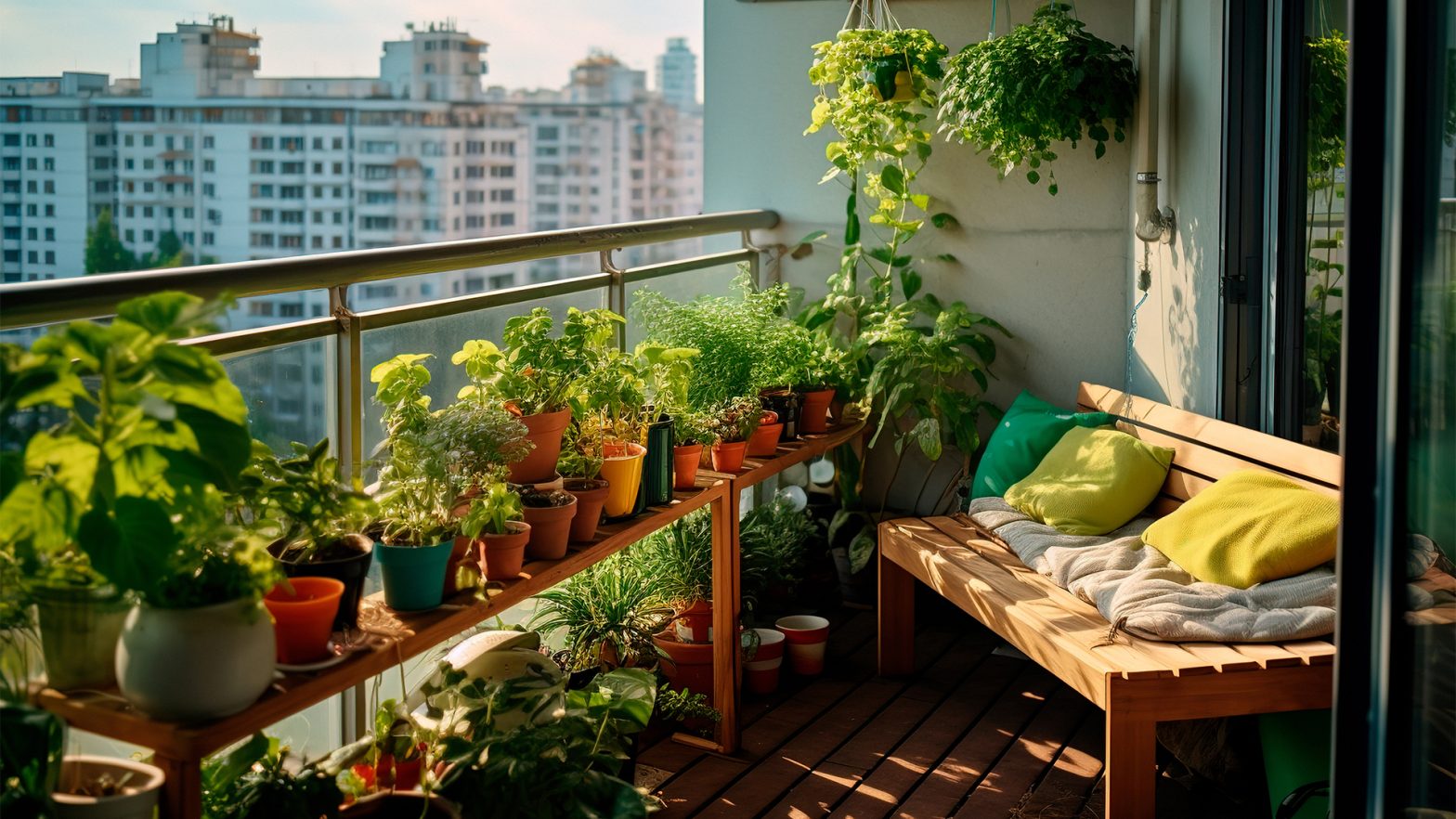
Gardens are a luxury, we don’t all have access to our own private slice of nature – especially when living in a city. In fact, one in eight UK homes don’t have a private garden, a total of nearly three million dwellings across the country.
However, it’s becoming clearer than ever that those living in the UK want to spend more time in nature. The waiting list for allotments has doubled in the last 12 years, as more and more people are looking to grow their own fruit and veg.
The longest recorded wait for an allotment so far is 17 and a half years! If, for obvious reasons, you think that’s a bit unreasonable – we have found a solution. Flats and homes that have a balcony can create a beautiful outdoor space to enjoy. It’s a trend that’s exploding on social media, with the hashtag #balconygarden accruing over one million tags on Instagram and a further 20,600 tags on TikTok.
With advice from The Heritage Window Company, an expert in aluminium windows and patio doors, we’ve discovered the best ways their clients have converted their balconies into the perfect growing gardens.
Know your space
Before you start, it’s imperative to understand how much weight your balcony can withstand whilst remaining safe and stable. Structural damage usually occurs when a balcony is overloaded with unreasonably heavy items that aren’t evenly distributed.
When creating your balcony garden, introduce items that can be manually moved and distributed evenly, such as planters or pots. Movable weight is considered a ‘live’ load, meaning you can easily modify your garden to suit the weight capacity of your balcony.
Cantilever, hung and bolt-on balconies are what most think of when they picture small- or medium-sized balconies. They are ideal for dressing up with plants, potters and mini-greenhouse containers. To avoid overloading your balcony stick to lightweight materials, such as plastic pots and aluminium greenhouses.
Kevin Brown, Managing Director at The Heritage Window Company, advises: “It’s a good idea to cut out any extra weight that doesn’t affect durability or function and that starts with your choice of material,” he explains.
“We’re seeing more and more balcony and roof terraces being turned into clever garden retreats. Aluminium is incredibly durable and lightweight, so it’s no surprise that balcony gardeners are opting for aluminium mini-greenhouses over heavy concrete planters.”
Vertical growing solutions
Now that you are familiar with your balcony and its limitations, you can start to think about clever ways of maximising your space without overloading it. One of the best ways to do this is by investing in vertical garden planters.
Trellis
“A wall-mounted trellis is a fantastic way of making the most of your balcony,” says Kevin. “It’s also a lightweight solution to making your garden balcony fuller without worrying about additional weight – the wall will be carrying the weight of the plants, not the balcony foundation.”
A vertical trellis is great for growing vines and other climbing plants. Just make sure to water them regularly as a trellis tends to leave plants dry. Being so close to a wall often means they are sheltered from the majority of rainfall.
Stacking planters
“Similarly to a trellis, stacking planters maximise space without hampering your creativity,” says Kevin. “You can find loads of these planters on the market at the moment, ranging from traditional wooden designs to more modern plastic alternatives.”
Living walls
They may sound a bit sci-fi, but living walls are becoming increasingly common. #LivingWall has over 170k posts on Instagram alone. But what exactly is a living wall?
A hanging solution that covers your wall in plants leaving maximum floor space, living walls are also fantastic for promoting biodiversity in your balcony garden. This is great if you like the thought of some feathered guests!
Pot-friendly fruit and veg
Pots are the balcony gardener’s best friend – they come in a range of designs, can be made from light materials and brought inside for the winter months. Knowing which fruits and veg to plant, however, is the tricky part.
“We’ve seen some brilliant uses of balconies for growing fruit and veg – including some you wouldn’t expect!” Kevin continues. “We’ve seen carrots grown in deep containers with multi-purpose compost, hanging pots with blueberries in and even whole lettuces.”
Some veg, like salad onions, need very little spacing to grow side-by-side – making them ideal for container growing. Salad onions only need three centimetres, while beetroots require 10 centimetres. Carrots only need eight centimetres, but they do require a deep pot to take root.
Herbs are also fantastic to pot. For example, mint will grow exponentially from one seedling to fill a whole container. When planned right, you can have your own little farmer’s market right on your balcony.
Modular planters
Modular planters are planting boxes specifically designed with unconventional shapes in mind. This is particularly useful if your balcony is an odd shape or if you’re struggling to fill a gap with a planter that looks natural.
“Bespoke design is crucial to a home’s aesthetic, whether you’re talking about uniquely shaped balconies with unconventional doors, the furniture you have or the planting equipment you’re decorating with,” Kevin comments. “Taking the time to find bespoke solutions will make your balcony garden look considered. Modular planters and furniture are perfect for this.”
Mini-greenhouses
Mini-greenhouses come in varied designs and materials, but aluminium will be your best bet for a balcony thanks to its lightweight construction. As far as style, they come in very small to medium-sized options, including box-shaped designs and wall-mounted variants.
Mini-greenhouses are a must if you plan to grow less hardy fruit and veg in your balcony garden, such as peppers, tomatoes, chillies and cucumbers.
“We’ve seen some clients who have made their mini-greenhouses the centrepiece of their balcony garden,” Kevin reveals. “In fact, one keen gardener even had matching black aluminium windows and a black aluminium frame for their mini-greenhouse. It’s always the little details that impress and mini-greenhouses certainly do mix form and function for an aesthetically pleasing balcony garden.”
2024 is shaping up to be the year of the balcony garden, so what are you waiting for? It’s time to forget the allotment and transform your balcony in time for summer.





























